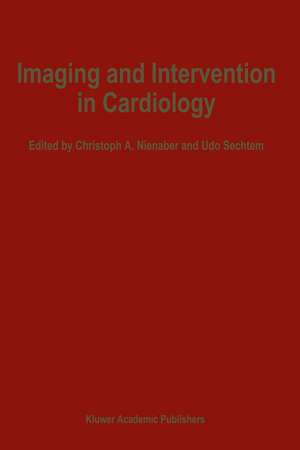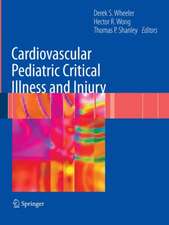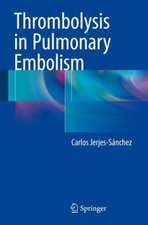Imaging and Intervention in Cardiology: Developments in Cardiovascular Medicine, cartea 173
Editat de C.A. Nienaber, Udo P. Sechtemen Limba Engleză Paperback – 28 sep 2011
Din seria Developments in Cardiovascular Medicine
- 5%
 Preț: 1484.50 lei
Preț: 1484.50 lei - 5%
 Preț: 375.17 lei
Preț: 375.17 lei - 5%
 Preț: 354.10 lei
Preț: 354.10 lei - 5%
 Preț: 1419.03 lei
Preț: 1419.03 lei - 5%
 Preț: 376.43 lei
Preț: 376.43 lei - 5%
 Preț: 1098.27 lei
Preț: 1098.27 lei - 5%
 Preț: 1438.38 lei
Preț: 1438.38 lei - 5%
 Preț: 376.78 lei
Preț: 376.78 lei - 5%
 Preț: 368.37 lei
Preț: 368.37 lei - 5%
 Preț: 380.25 lei
Preț: 380.25 lei - 5%
 Preț: 2117.58 lei
Preț: 2117.58 lei - 5%
 Preț: 367.28 lei
Preț: 367.28 lei - 5%
 Preț: 366.56 lei
Preț: 366.56 lei - 5%
 Preț: 371.10 lei
Preț: 371.10 lei - 5%
 Preț: 370.94 lei
Preț: 370.94 lei - 5%
 Preț: 783.18 lei
Preț: 783.18 lei - 5%
 Preț: 713.18 lei
Preț: 713.18 lei - 5%
 Preț: 1098.27 lei
Preț: 1098.27 lei - 5%
 Preț: 375.49 lei
Preț: 375.49 lei - 5%
 Preț: 373.47 lei
Preț: 373.47 lei - 5%
 Preț: 723.93 lei
Preț: 723.93 lei - 5%
 Preț: 1104.13 lei
Preț: 1104.13 lei - 5%
 Preț: 2117.20 lei
Preț: 2117.20 lei - 5%
 Preț: 716.09 lei
Preț: 716.09 lei - 5%
 Preț: 372.03 lei
Preț: 372.03 lei - 5%
 Preț: 722.33 lei
Preț: 722.33 lei - 5%
 Preț: 660.07 lei
Preț: 660.07 lei - 5%
 Preț: 375.34 lei
Preț: 375.34 lei - 5%
 Preț: 1423.22 lei
Preț: 1423.22 lei - 5%
 Preț: 715.35 lei
Preț: 715.35 lei - 5%
 Preț: 790.69 lei
Preț: 790.69 lei - 5%
 Preț: 720.68 lei
Preț: 720.68 lei - 5%
 Preț: 3185.49 lei
Preț: 3185.49 lei - 5%
 Preț: 1418.27 lei
Preț: 1418.27 lei - 5%
 Preț: 784.64 lei
Preț: 784.64 lei - 5%
 Preț: 714.63 lei
Preț: 714.63 lei - 5%
 Preț: 370.74 lei
Preț: 370.74 lei - 5%
 Preț: 376.22 lei
Preț: 376.22 lei - 5%
 Preț: 660.85 lei
Preț: 660.85 lei - 5%
 Preț: 368.37 lei
Preț: 368.37 lei
Preț: 383.93 lei
Preț vechi: 404.13 lei
-5% Nou
Puncte Express: 576
Preț estimativ în valută:
73.46€ • 76.70$ • 60.80£
73.46€ • 76.70$ • 60.80£
Carte tipărită la comandă
Livrare economică 04-18 aprilie
Preluare comenzi: 021 569.72.76
Specificații
ISBN-13: 9789401065382
ISBN-10: 9401065381
Pagini: 572
Ilustrații: XVIII, 550 p.
Dimensiuni: 160 x 240 x 30 mm
Greutate: 0.79 kg
Ediția:Softcover reprint of the original 1st ed. 1996
Editura: SPRINGER NETHERLANDS
Colecția Springer
Seria Developments in Cardiovascular Medicine
Locul publicării:Dordrecht, Netherlands
ISBN-10: 9401065381
Pagini: 572
Ilustrații: XVIII, 550 p.
Dimensiuni: 160 x 240 x 30 mm
Greutate: 0.79 kg
Ediția:Softcover reprint of the original 1st ed. 1996
Editura: SPRINGER NETHERLANDS
Colecția Springer
Seria Developments in Cardiovascular Medicine
Locul publicării:Dordrecht, Netherlands
Public țintă
ResearchCuprins
One: Thrombolysis.- 1. Serial myocardial perfusion imaging with Tc-99m-labeled myocardial perfusion imaging agents in patients receiving thrombolytic therapy for acute myocardial infarction.- 2. Contraction-perfusion matching in reperfused acute myocardial infarction.- 3. Metabolic characteristics in the infarct zone: PET findings.- 4. Assessment of myocardial viability with positron emission tomography after coronary thrombolysis.- 5. Postthrombolysis noninvasive detection of myocardial ischemia and multivessel disease and the need for additional intervention.- Two: Coronary revascularization: Assessment before intervention.- 6. Imaging to justify no intervention.- 7. Interpretation of coronary angiograms prior to PTCA: Pitfalls and problems.- 8. Diagnostic accuracy of stress-echocardiography for the detection of significant coronary artery disease.- 9. Perfusion imaging with thallium-201 to assess stenosis significance.- 10. Perfusion imaging by PET to assess stenosis significance.- 11. Contrast enhanced magnetic resonance imaging for assessing myocardial perfusion and reperfusion injury.- 12. Non-invasive visualization of the coronary arteries using magnetic resonance imaging - is it good enough to guide interventions?.- 13. MRI as a substitute for scintigraphic techniques in the assessment of inducible ischaemia.- 14. Assessment of viability by MR-techniques.- 15. Assessment of viability in severely hypokinetic myocardium before revascularization and prediction of functional recovery: Contribution of thallium-201 imaging.- 16. Assessment of myocardial viability before revascularization: Can sestamibi accurately predict functional recovery?.- 17. Assessment of viability in noncontractile myocardium before revascularization and prediction of functional recovery by PET.- 18. Assessment of viability in severely hypokinetic myocardium before revascularization and prediction of functional recovery: The role of echocardiography.- 19. Assessment of functional significance of the stenotic substrate by Doppler flow measurements.- Three: Coronary revascularization: Assessment after intervention.- 20. Angiographic assessment of immediate success and the problem (definition) of restenosis after coronary interventions.- 21. Immediate evaluation of percutaneous transluminal coronary balloon angioplasty success by intracoronary Doppler Ultrasound.- 22. Evaluation of the effect of new devices by intravascular ultrasound.- 23. Can restenosis after coronary angioplasty be predicted by scintigraphy?.- 24. Evaluation of immediate and long-term results of intervention by echocardiography: Can restenosis be predicted?.- 25. Predictors of restenosis after angioplasty: Morphologic and quantitative evaluation by intravascular ultrasound.- 26. How to evaluate and to avoid vascular complications at the puncture site.- Four: Imaging and valvular interventions.- 27. Selection of patients and transesophageal echocardiography guidance during balloon mitral valvuloplasty.- 28. Echocardiography for intraprocedural monitoring and postinterventional follow-up of mitral balloon valvuloplasty.- Five: Intervention in congenital heart disease.- 29. Preinterventional imaging in pediatric cardiology.- 30. The role of ultrasound in monitoring of interventional cardiac catheterization in patients with congenital heart disease.- 31. Follow-up of patients after transcatheter procedures in congenital heart disease using noninvasive imaging techniques.- Colour section.















